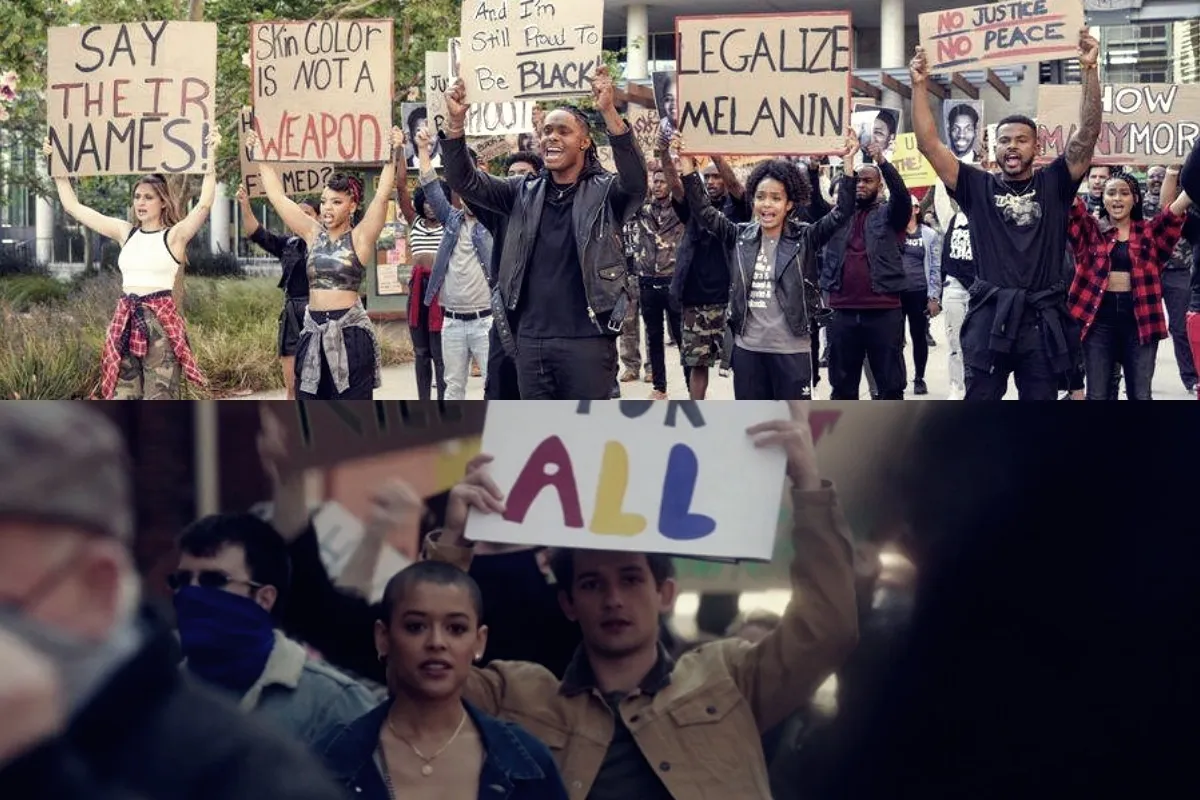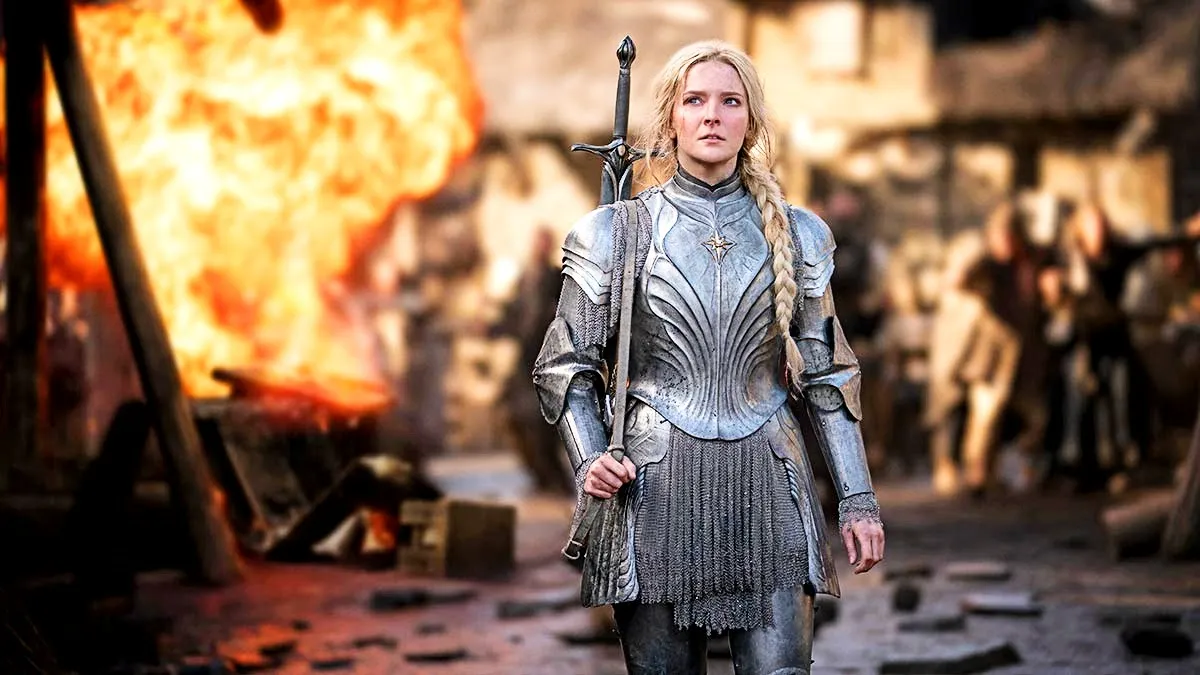Yesterday, both The CW’s Gossip Girl and Freeform’s grown-ish attempted to take a break from their typical shallow, upper-middle-class/rich shenanigans to give voice to political issues going on in their world. The result was … messy.
On the new Gossip Girl reboot, the show has tried not to be a totally shallow exploration of wealth and privilege—a mistake, if you ask me. The results have been mixed. Although the show is improving with every episode, it also fails to say anything really deep about class. In the most recent episode, Obi (the rich white boy who talks about Marx) got into a conflict with his girlfriend, Zoya (who is the half-sister of his longtime ex-girlfriend), over how deeply he actually cares about the politics he talks about.
Zoya wonders aloud, “Sometimes I wonder if he actually cares about the things he talks about, or he just thinks that he’s supposed to.”
Over dinner with Obi’s mother and others, all of whom are further gentrifying the Navy Yard, Zoya actually brings up those politics. Obi shrinks, afraid to actually confront his mother, hiding it under the illusion of being “polite.”
Eventually, all that Marx penetrates his brain, and he goes to a protest about housing rights, all for it to become a way of furthering a love triangle, where Obi and his ex-girlfriend, Julian (the half-sister of his current girlfriend), kiss because he’s so impressed that she came to the protest.
In a piece for Vanity Fair, author Delia Cat hit the nail on the head on why, despite the fact that the show has things going for it, it has yet to really be impactful:
The breadth of references to real-life Black and afro-indigenous cultural authorities is refreshing; a mainstream show where teens live and breathe Black art as the cultural default feels like a revelation. But though the new Gossip Girl succeeds in depicting the kind of privilege that takes us from protest to Net-A-Porter all in one day, it stops short of truly engaging with the accompanying concepts of power and elitism. And maybe that’s why it doesn’t feel “fun.” It’s beautiful and interesting and a little revolutionary—but watching it is just not the same as laughing at rich white people doing rich white people things.
The desire to do more and make points only served to make poor people and the other disenfranchised, voiceless people props in a very dull love triangle as two gorgeous Black women fight over the blandest male character in the cast.
It is okay for a show about the ultra-rich to be a bit voyeuristic, because ultimately the choice to position them amongst that economic surplus does isolate them from the issues of others. We do not have to drop them into a protest to highlight their “growth” as characters, because that is a painfully cynical way of exploring any of this.
Speaking of superficiality, it is time to talk about grown-ish. grown-ish is the Kenya Barris-created spinoff of his popular show black-ish, about the eldest Johnson daughter going to college à la A Different World. Much like A Different World, the show has attempted to talk about topical issues, but unlike its spiritual predecessor, it almost always has nothing to say.
From colorism to teen pregnancy, the show has been painfully episodic and sitcom-y in the worst way about discussing any of it. No character actually seems to grow from their experiences. Every conversation just feels like Twitter monologues stolen from more insightful people online, and more often than not, the show forgets that we are not in the era of A Different World anymore.
In their two-episode BLM story, grown-ish delivers to the audience all of the trappings of an emotional exploration of the topic. Yesterday’s episode opened with a protester beautifully singing Strange Fruit. But with that beauty, we also were confronted with an entire opening of music video activism.
They took one of their darker-skinned female extras and put her front and center during the campus protest scene—a reminder once again at how colorist the show is, that an established darker-skinned female character couldn’t fill that role. Then, once the curfew is in place, the entire female cast retires to their homes where they can monologue about issues to each other.
Only Aaron, Doug, Luca, and Luca’s annoying younger sister go to the protest, and they get the least amount of screen time. When we do see them, a portion of it is taken up by Doug and Luca talking about whether Doug is “smashing” Luka’s sister. Who cares?
Jaz and Zoey spend the episode talking about white fragility to their Jewish friend, Nomi, who comes to a realization about her fragility at the very end of the episode by Twitter explaining to her mom (thanks, boomers). Ana and her boyfriend Javi have an argument over Javi thanking the police right in front of BLM protesters.
The show never knows how to deal with the fact that Ana is a Republican, so every season, they have to remind us she’s a “good one,” even though her politics would be at the opposite of everyone else in the cast.
During the era when A Different World was out, the ability to talk about issues was powerful because no one was speaking about those things on mainstream television. Many Black shows felt forced to be almost race-less in their discourse post-Cosby Show, and the fact that A Different World was so on point about things is why it holds up today. It did expose its white audience to new things, but always wrote firstly for Black viewers.
With social media, these issues are at the forefront of our day. No one, unless they actively wanted to, was able to avoid the BLM protests or those conversations.
grown-ish feels a responsibility to speak up, but it often has nothing to add to the room. It is the same conversations you can see on Black Twitter, except they aren’t getting paid for it.
(image: Freeform/HBO)
Want more stories like this? Become a subscriber and support the site!
—The Mary Sue has a strict comment policy that forbids, but is not limited to, personal insults toward anyone, hate speech, and trolling.—










Published: Aug 13, 2021 02:17 pm